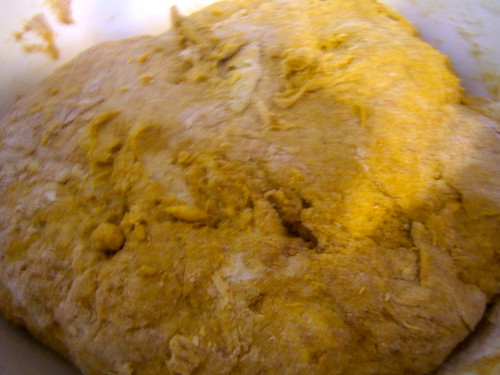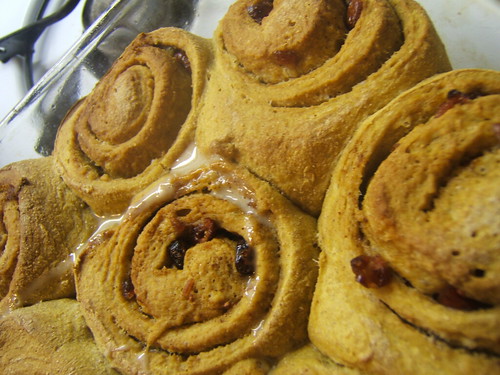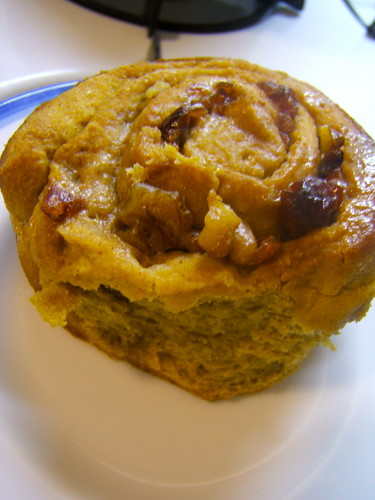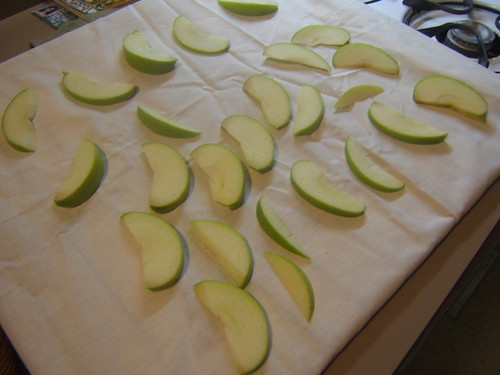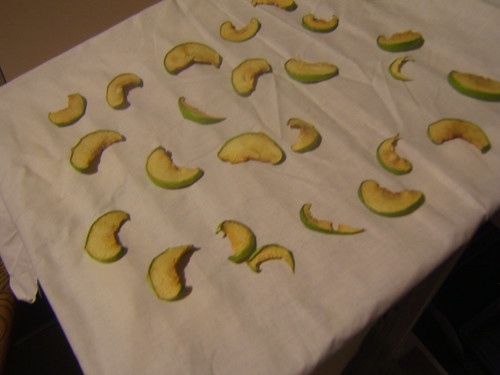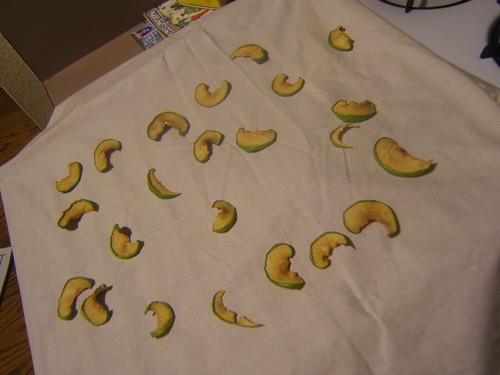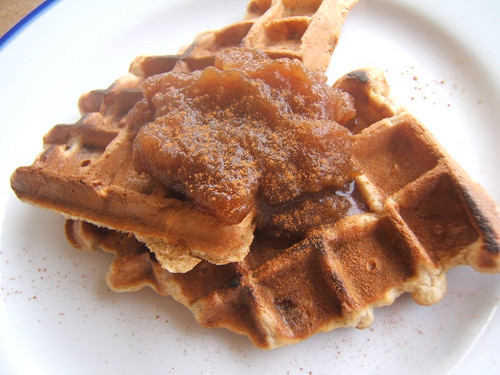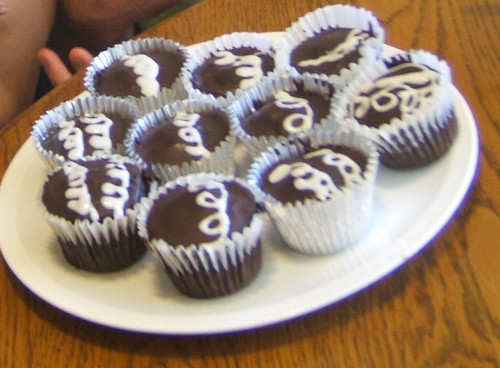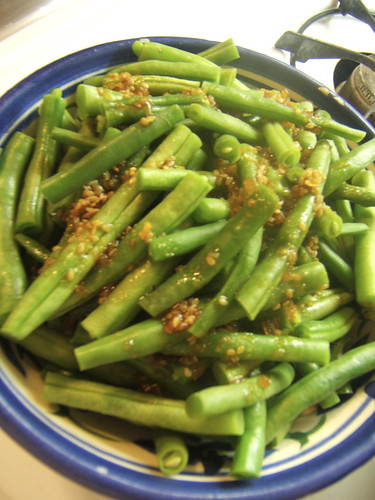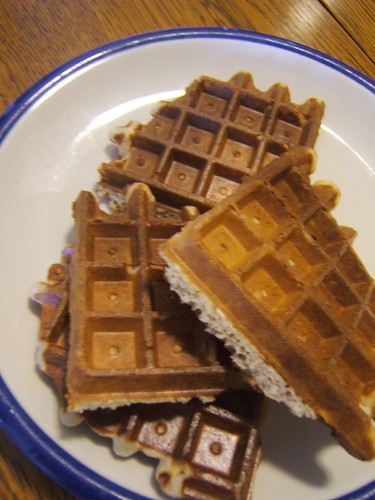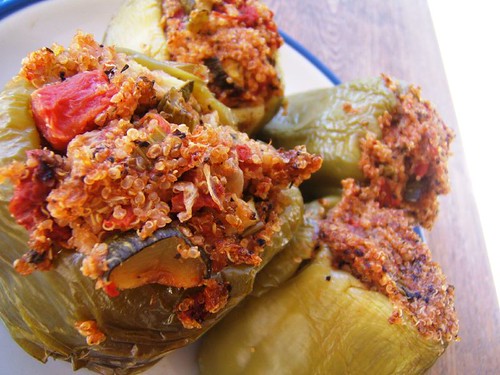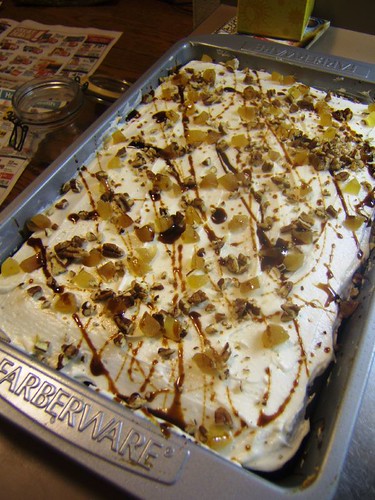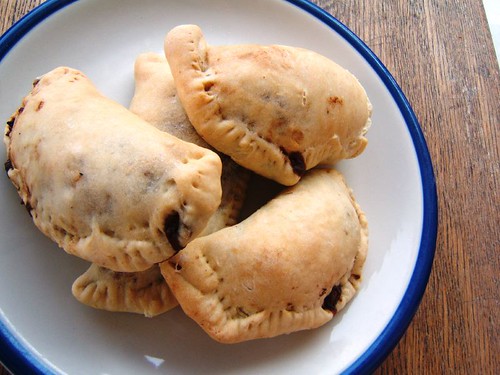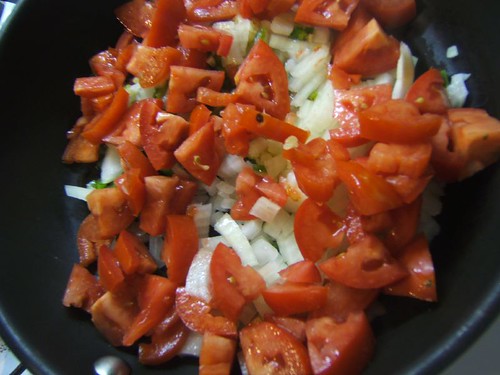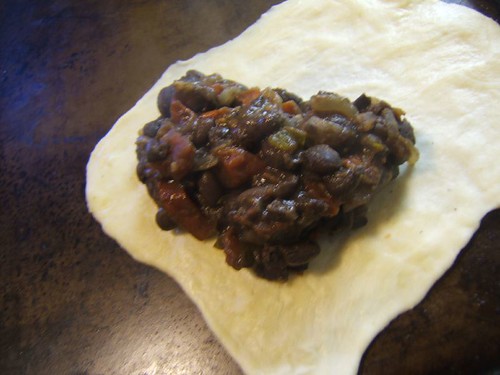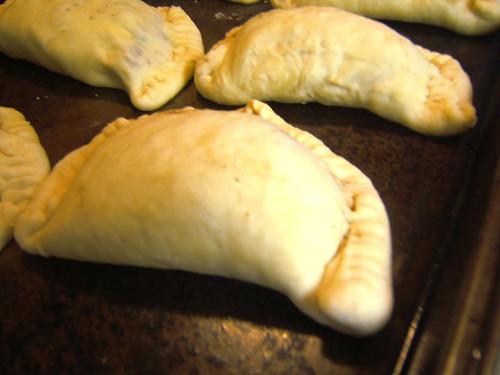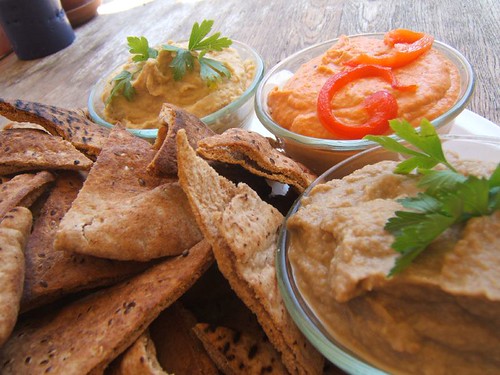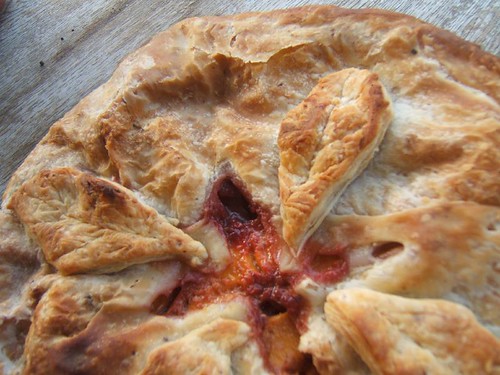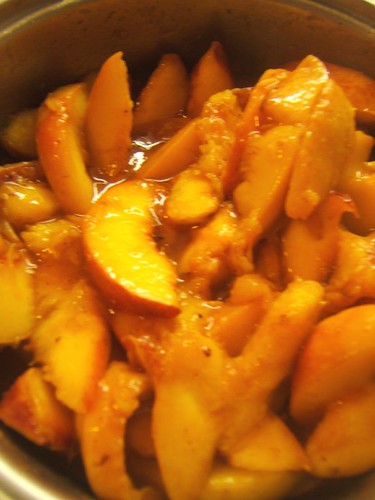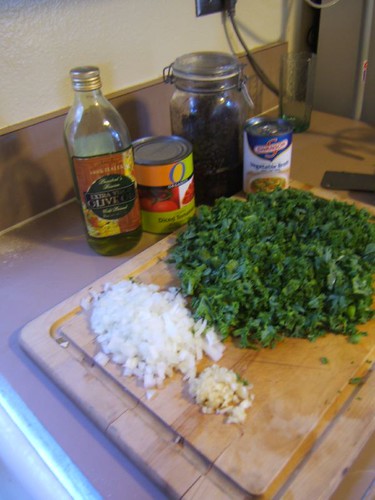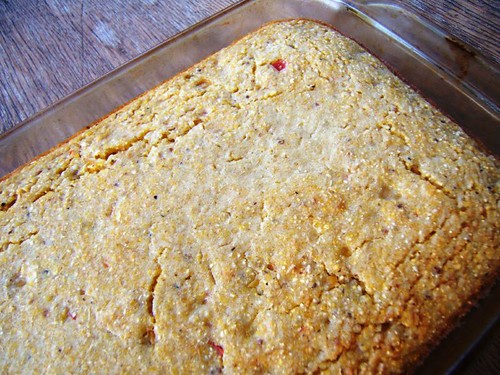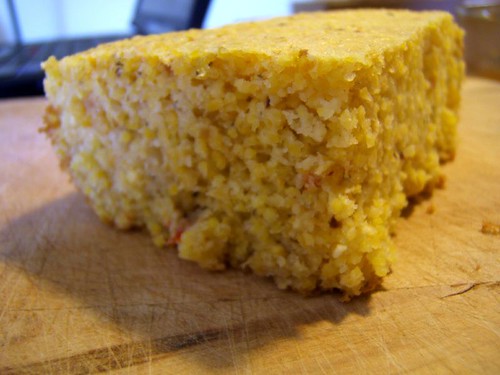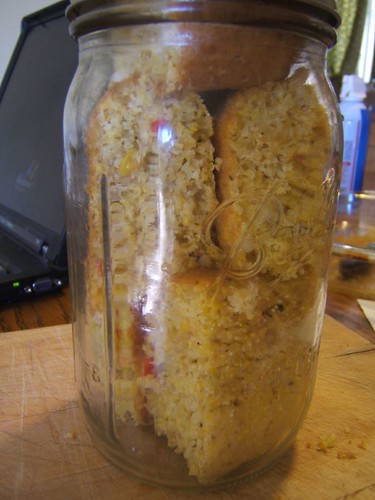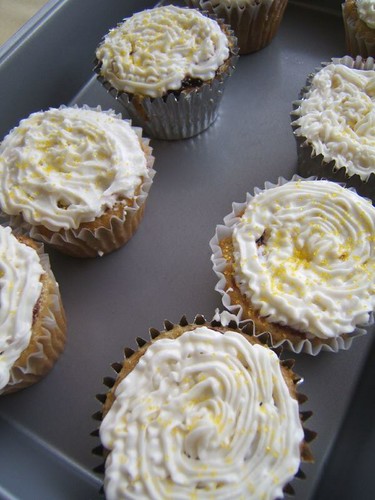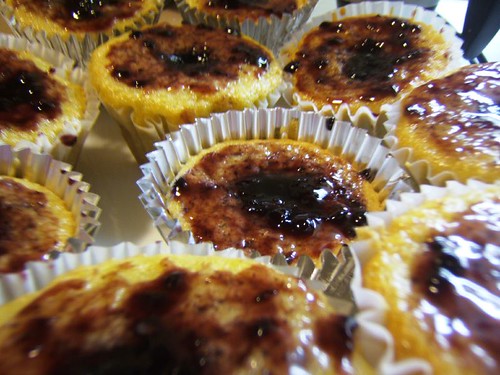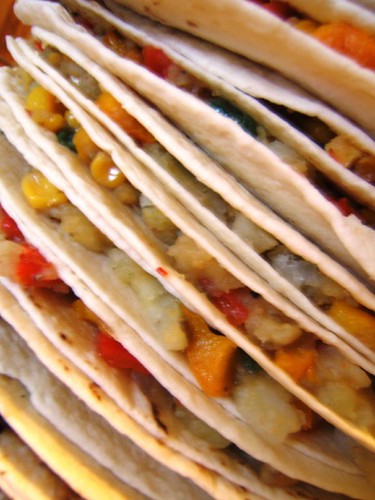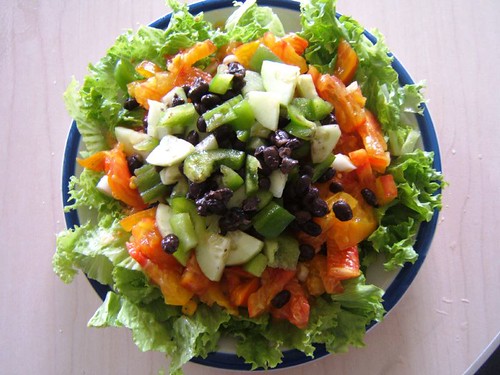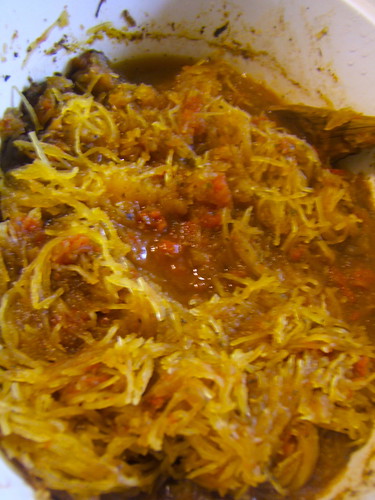
Spaghetti squash! Quite possibly my favorite squash ever (although butternut is quickly working its way into my good graces). When cooked, the flesh of the squash separates into thin, spaghetti like strands, thus the name. I think most people roast spaghetti squash, but my mother always cooked it on the stovetop. Because I am lazy, I adapted it to work in the crockpot.
If you want to make your own, you'll need to start off by assembling the appropriate component parts:

Here we have:
2 medium spaghetti squash (about 5 lbs each)
1 28 oz. can diced tomatoes
2 medium onions (dice these)
4 cloves garlic (crushed)
1 c water or vegetable stock
1 tbsp olive oil
You'll also need about a teaspoon each of basil, marjoram, thyme, and oregano (adjust to taste, I tend to just toss stuff in).
Start by prepping your squash. You will need to remove the skin. This step can be a real pain in the neck, but sticking the squash in the microwave for about 5 minutes beforehand really speeds things up and makes the skin easier to get off. I generally find the squash skin is easiest to get off using a serrated bread knife, like so:
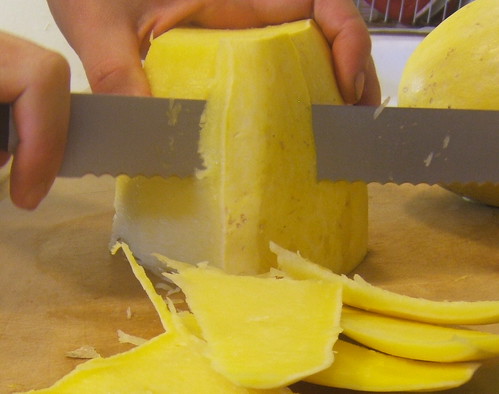 Once the squash is de-skinned, scoop out the seeds and slice into about 3/4" thick rings. Place in a crockpot and add the canned tomatoes:
Once the squash is de-skinned, scoop out the seeds and slice into about 3/4" thick rings. Place in a crockpot and add the canned tomatoes:
Turn the heat onto low and cover it up. Now to give the onions and garlic a little saute before throwing them into the mix. I know, I know, the whole point of a crockpot is that you don't have to mess around with cooking things on the stove. But trust me, in the case of onions, a few minutes time is so worth it. If you really want to keep it simple, add the onions and garlic raw, but don't come crying to me when your squash tastes like raw onions. I won't want to hear it.
So anyway. Heat a tablespoon of olive oil in a frying pan over medium heat. When the oil is hot, throw in the onions and garlic, stirring around to distribute the oil. Saute for 5-8 minutes, until the onions are soft and a little translucent:

Mmmmmm. The other reason I don't mind taking time to saute the onions is that I love the way they smell when they're cooking.
Finally, toss the onions, garlic, and herbs into the crockpot. Stir everything around and pour a cup of water or stock over the top. Leave on low for ~8 hours (time may vary depending on your pot), then enjoy! This recipe will make 6-8 portions, depending on whether you are eating as a side or a full on meal. If you are planning to eat it as a meal, tossing in some chickpeas or white beans will up the protein content and make it a bit more filling.
